Four ways feral hogs cost farmers and ranchers
Learn to recognize signs of these invaders, what’s at risk and what you can do to control their population on your land.
Noble Research Institute ranch manager Curtis Larson has a quick answer when he’s asked how producers would know if they had feral hogs on their land.
“You can see exactly where they’re rooting up the pasture, going for stuff in the ground, grub worms and such,” says Larson, pointing to an affected section of pasture on Noble’s Coffey Ranch west of Marietta, Oklahoma.
Proof of their presence is often visible in your fields or pastures, as extensive digging or rooting, muddy wallows, bark rubbed off trees, and hoof prints. Determining if you have a feral hog problem isn’t the challenge – controlling them is.
Feral hogs are a growing threat that wreak havoc on a ranch’s landscape, resources and bottom line. Annually, they cause an estimated $1.5 billion in damage across the U.S., with around 9 million of them reported across 35 states.
Here are four of the major ways feral hogs can damage your land and threaten the health of your livestock and native wildlife, followed by recommendations for controlling feral hog populations on your ranch.
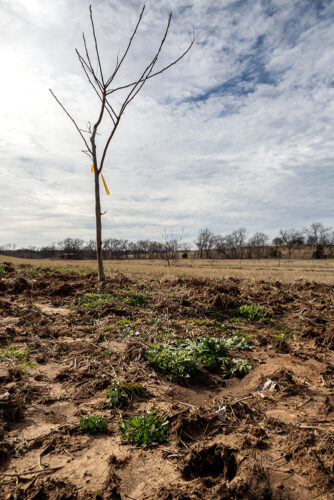
1. Damaging the land
It’s estimated that a single feral hog can cause $500 worth of damage to fields and pastures. More when they get into pecan orchards. Weighing between 100 and 350 pounds, an average adult male or female feral hog is a formidable animal.
“They’ll root up a spot as big as a half-acre. They will just completely tear it up looking for insects, getting grass roots, old pecans, and such,” says Derick Warren, research services associate at Noble. A call to Warren is the first step Noble ranch managers take when they see evidence of feral hogs on any of the ranches.
From a ranch management perspective, Larson has seen feral hogs create such damage that it takes the pasture a year to recover. Speaking from experience on a friend’s ranch, Larson has seen mowers, rakes and other field equipment damaged when trying to traverse the field after feral hogs.
Beyond such immediate damage, long-term effects of feral hog damage can be devastating. On sloped landscapes, the opportunity for erosion is high while forages attempt to reseed and take root. What’s more, waste from feral hogs may contain seeds from invasive species that will take hold under the right conditions.
2. Contaminating Water Sources
The presence of feral hogs can greatly diminish water quality on a ranch, posing a threat to livestock. All pigs, wild and domestic, rely on water to cool themselves. They’ll create wallows – muddy areas in tall timbers or along a waterline – to coat their skin in mud and soil ranch water resources.
Larson is quick to fence cattle away from any water that may be contaminated by feral hog waste. A common method of disease transmission between feral hogs and livestock is through indirect contact with contaminated feces or urine, making water sources a hot zone for disease risk.
3. Spreading disease at feed areas
Another hot zone is feeding areas. Feral hogs, like other animals, are attracted to any feed areas, and they’re smart. They’ll learn where feeding happens and use that to their advantage. The economic concern is less about the loss of feed and more the risk of disease spreading from feral hogs to livestock.
Not only have they been documented to push cattle, especially calves, away from feed areas, they can transfer disease to domestic animals through contact with their waste products. As many as a third of the feral hog population are carriers of the pseudorabies virus. This disease can spread to dogs and livestock. Feral hogs also may be infected with brucellosis and leptospirosis, which can be passed to livestock and humans.
4. Preying on livestock and beneficial wildlife
Feral hogs are opportunistic omnivores. That’s how Noble regenerative ranching advisor Josh Gaskamp refers to their diet. Which means they’ll dig into cattle feed as eagerly as they will attack smaller livestock, fawns and ground-nesting birds. Feral hogs are known to raid ground-nesting birds’ nests, hurting northern bobwhite quail and wild turkey populations.
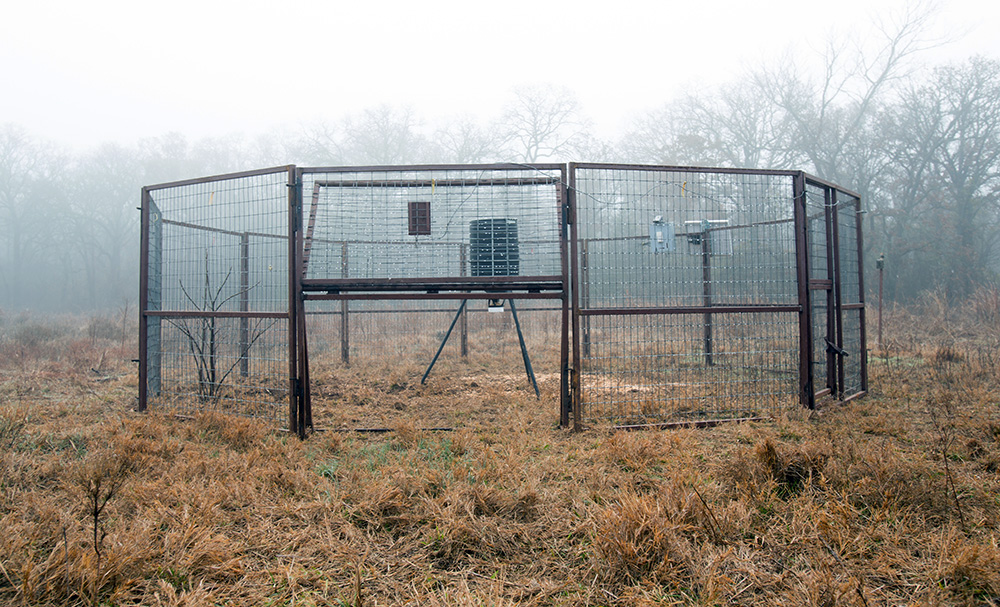
Best ways to control feral hog populations
Gaskamp keeps sheep on his ranch in southern Oklahoma. Since getting guardian dogs, he’s reduced depredation opportunities for the feral hogs on his property. Noble ranch managers also report fewer feral hog problems where guardian dogs are in use.
Many farmers’ or ranchers’ first instinct may be to deter feral hogs through hunting or targeted shooting. But Warren and Gaskamp would discourage ranchers from taking that approach.
“If you shoot at them, you might get rid of one, but the rest scatter. Then they become your neighbor’s problem for a while,” says Warren. This is why Gaskamp recommends working with neighboring ranches to control feral hog populations.
“I have a 160-acre ranch,” says Gaskamp. “I can control those acres, but if my neighbors are doing nothing, we’re collectively doing nothing. Pigs don’t stay within one ranch.”
He suggests ranchers invest in control mechanisms together.
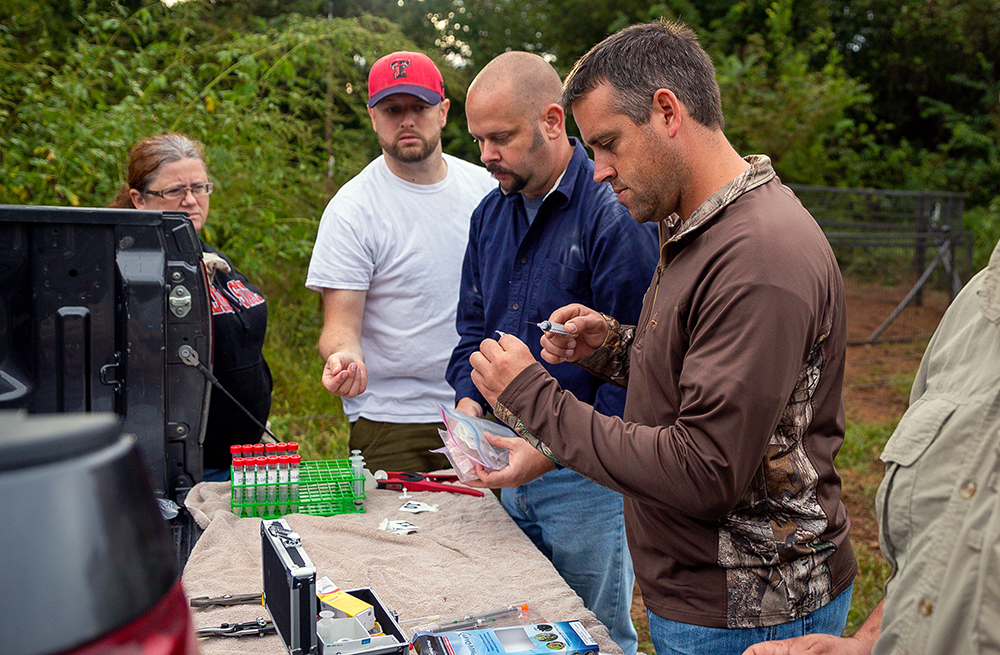
Based on four years of research during work on his master’s thesis, Gaskamp developed a monitored, suspended trapping system for feral hogs. Today, the BoarBuster(TM) trap is used on Noble ranches to control feral hog populations. Gaskamp and Warren like the trap because it can be set up by one or two people and deployed remotely.
The BoarBuster trap works with an integrated camera that sends a live feed to a rancher’s smartphone. The rancher can wait until enough pigs are in the trap, then drop it with a tap of the screen.
Other trapping methods include a drop net and on-the-ground, corral-style traps. But Gaskamp says he knows there’s no one-size-fits-all prescription for feral hog control. What works for one farmer or rancher might not work on another operation.
If trapping isn’t feasible for your operation, or you want a helping hand, Gaskamp suggests calling your state’s office of the USDA-Animal and Plant Health Inspection Service Wildlife Services. APHIS administers the National Feral Swine Damage Management Program and employs professionals tasked with monitoring and controlling the nation’s feral hog threat.
Gaskamp reminds ranchers that controlling feral hog populations is a process, not a single event, and that it takes patience.
“You have to habituate pigs to a bait site” when trapping, he says. “Then you can set up a trap and allow the pigs to adjust to that in their environment. After 10 to 14 days, maybe longer, you can set the trap and choose the right time to drop.”

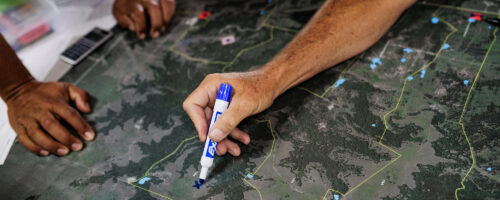
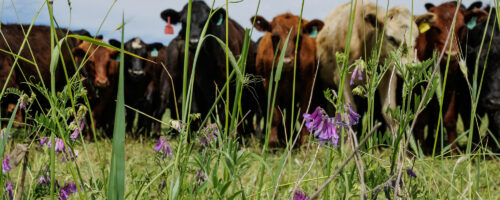
Comment